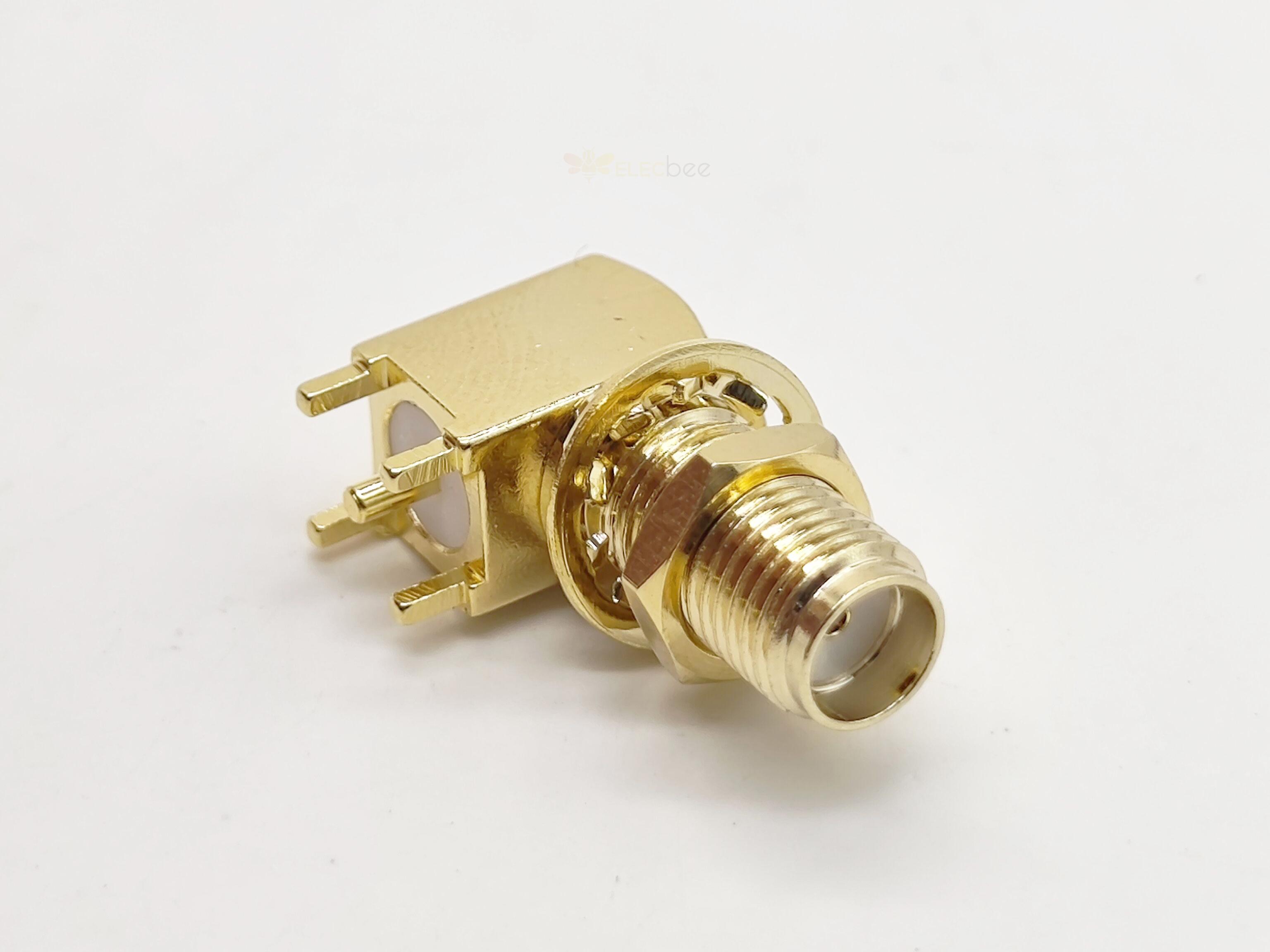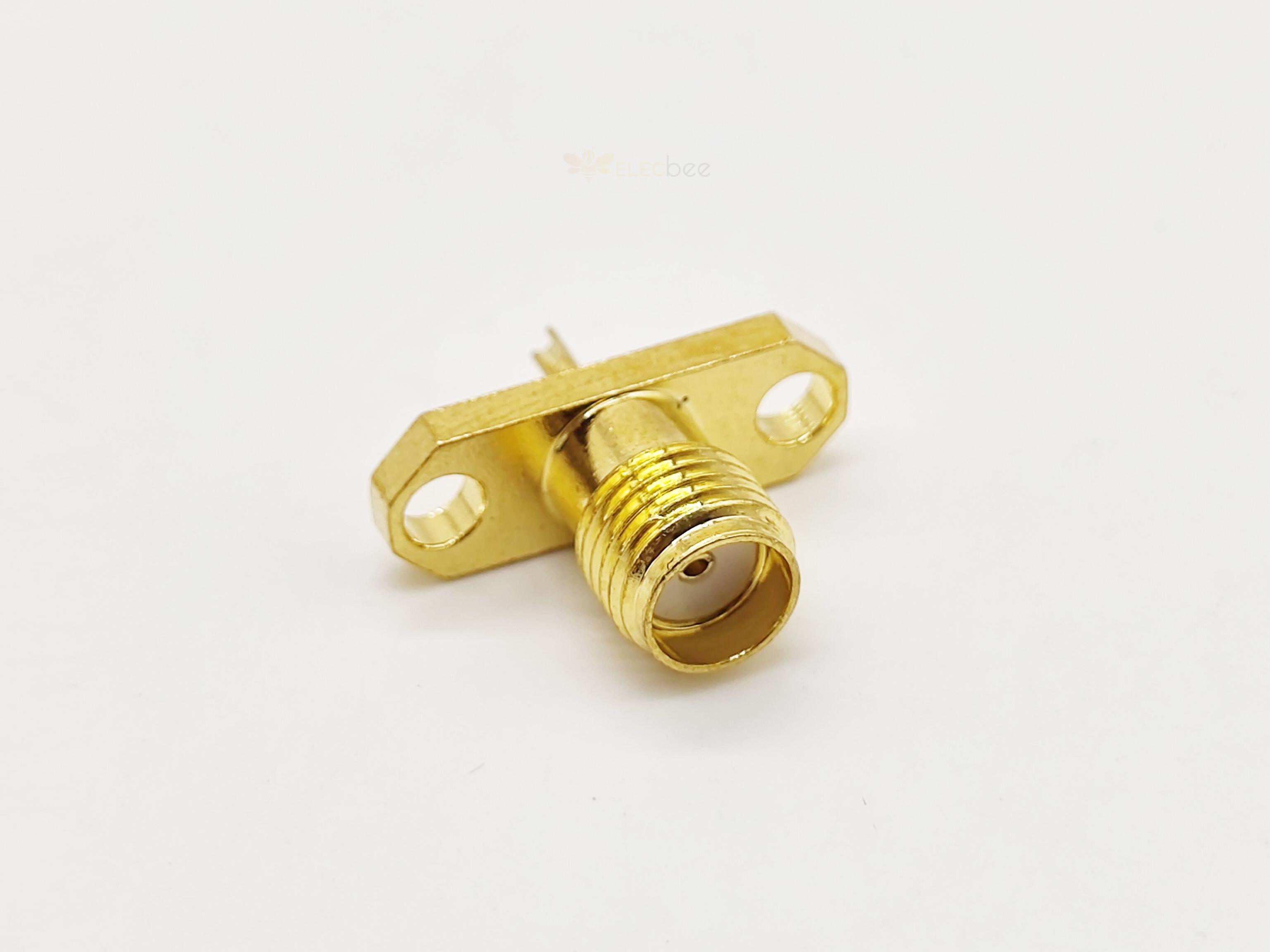SMA and RP-SMA are so-called coaxial connectors, which are the standards for antenna connection. Through the screwable coupling mechanism, they form the minimum interface of the coaxial cable.
They are now used in many different devices and applications in the high frequency range. In the following, you will learn the difference between SMA standard and RP-SMA standard and which version can be used for which purpose.

Coaxial connector
To adapt to the structure of coaxial cable, the coaxial connector also protects the inner conductor from electromagnetic effects by surrounding the inner conductor with an insulating layer. The so-called dielectrics are usually made of plastics such as polyethylene to ensure shielding and capacitive behavior.
In addition, the characteristic impedance and impedance will affect the structure of coaxial connector. The characteristic impedance of the line is mainly affected by the characteristics of the dielectric. It describes the relationship between the current moving in the same direction and the voltage wave moving in the same direction. The characteristic impedance of the cable depends on the frequency, and the cable length has no effect on it.
Impedance is typically 50 ohms in the high frequency range and 75 ohms in audio and television technology. Impedance is generated by ohmic resistance and reactance.
The main advantages of coaxial cable are fast transmission speed and simple connection technology. SMA and RP-SMA are the most important coaxial connector types.
SMA and RP-SMA
SMA connector
The classic SMA connector was developed in the 1960s. The abbreviation SMA stands for "Mini version A".
In order to maintain the transmission speed of coaxial cable, the connectors corresponding to the two versions adopt coaxial design. Therefore, they have good electrical shielding and low electromagnetic interference.
RP-SMA connector
The reverse polarity SMA design is easily confused with SMA connector. This variant was originally developed to prevent unauthorized connections to stronger antennas. The "reverse polarity" of RP-SMA only refers to the interface variant and has nothing to do with the signal polarity.
The RP-SMA connector also has a female thread, but its middle is a threaded cup rather than a pin. Compatible with this, the socket consists of internal threads with internal threads. Therefore, the SMA antenna connection is mechanically installed on the RP-SMA socket, but not electrically.

Comparison of two designs
SMA and RP-SMA are standard threaded antenna connectors for high frequency applications from 1 GHz to approximately 1 GHz. 16 GHz。 They are most commonly used in microwave systems, such as portable radios and cell phone antennas, but also in WiFi antenna systems.
The difference between the two versions is the reversal of design. The SMA connector has a union nut and an inner conductor pin. The socket consists of an external thread and an inner conductor pipe.
Application of SMA and RP-SMA
In the LTE/GSM/UMTS field, the SMA connection is usually used as the standard for antennas and devices. On the other hand, RP-SMA is mainly used for WLAN antennas and devices.
A common application is to improve reception by relocating or extending the feed to the WLAN antenna. Due to different application fields and antenna designs, SMAs also have different connection methods. If necessary, these must be adjusted by the adapter.
One of the advantages of RP-SMA over SMA is wear resistance. Frequent loosening and loosening - usually up to 500 connections are OK - can cause internal conductor wear, which reduces signal strength. In the case of SMA built-in socket, the connection on the replacement equipment is more complex. On the other hand, for RP-SMA connectors, the cup is located on the antenna or cable, which means, for example, that when wear occurs, only the antenna or cable needs to be replaced.

Elecbee is trusted company specializing in R&D, production, and sales of RF connectors, RF adapters, and antennas. All its products are from the OEM Original Factory, same quality with much better price.
For further assistance or know more about our products, live chat with us here or e-mail us at service@elecbee.com.
